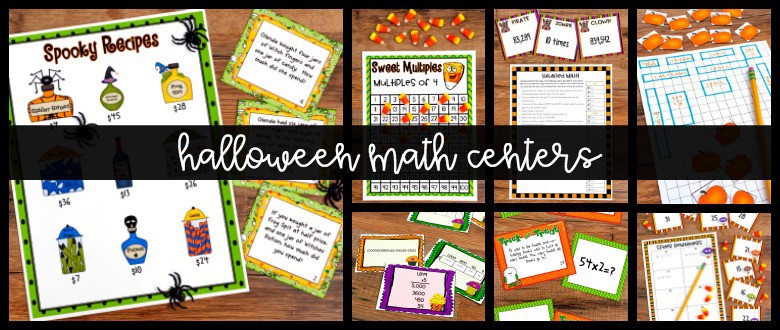
I love teaching through the holidays. From fall through Christmas, I have have so much fun with my students, and seeing holidays and events through their eyes makes everything a little more special. This can be a great opportunity to engage students in meaningful math tasks that reinforce a rigorous curriculum. I’ve recently created ten 4th grade Halloween math centers that are great for reinforcing math concepts taught in the first part of the school year. If you’re a 3rd grade teacher, you can visit this post to learn more about my 3rd grade centers.
These Halloween math centers were designed to be used as centers that can be organized with file folders or any basic container or storage device. I like to attach each center activity title page to the outside of a file folder and attach the center’s directions on the inside of the file folder and laminate the folder. The only prep needed is to print the task cards and/or recording sheets, laminate, and place the cards inside the corresponding file folder, and you’re ready!
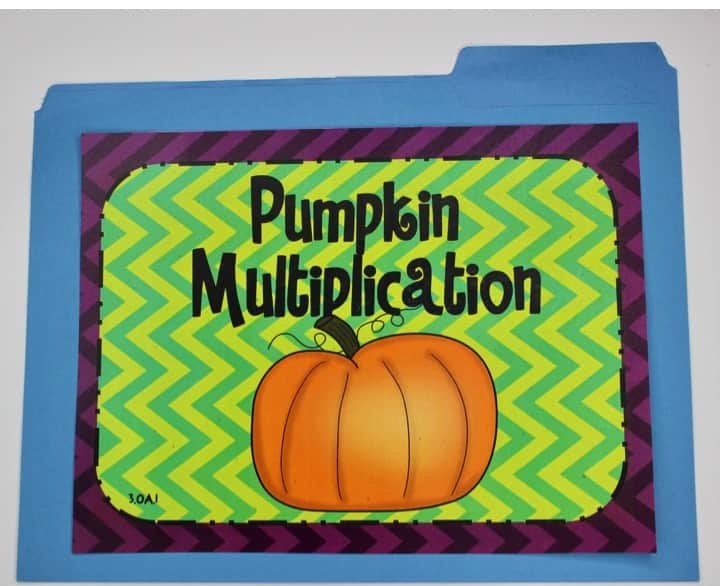
Cupcake Multiplication
In the Cupcake Multiplication activity, students have a collection of cards that represent multiplication problems. Students should group all of the distributive property cards together, partial product cards together, and area model cards together. Then, students should match the distributive property cards with the corresponding partial product card. After that, students should match the two cards with an area model card that reflects the same multiplication problem. Students rite the matching multiplication number sentences on the recording sheet and solve the problem.
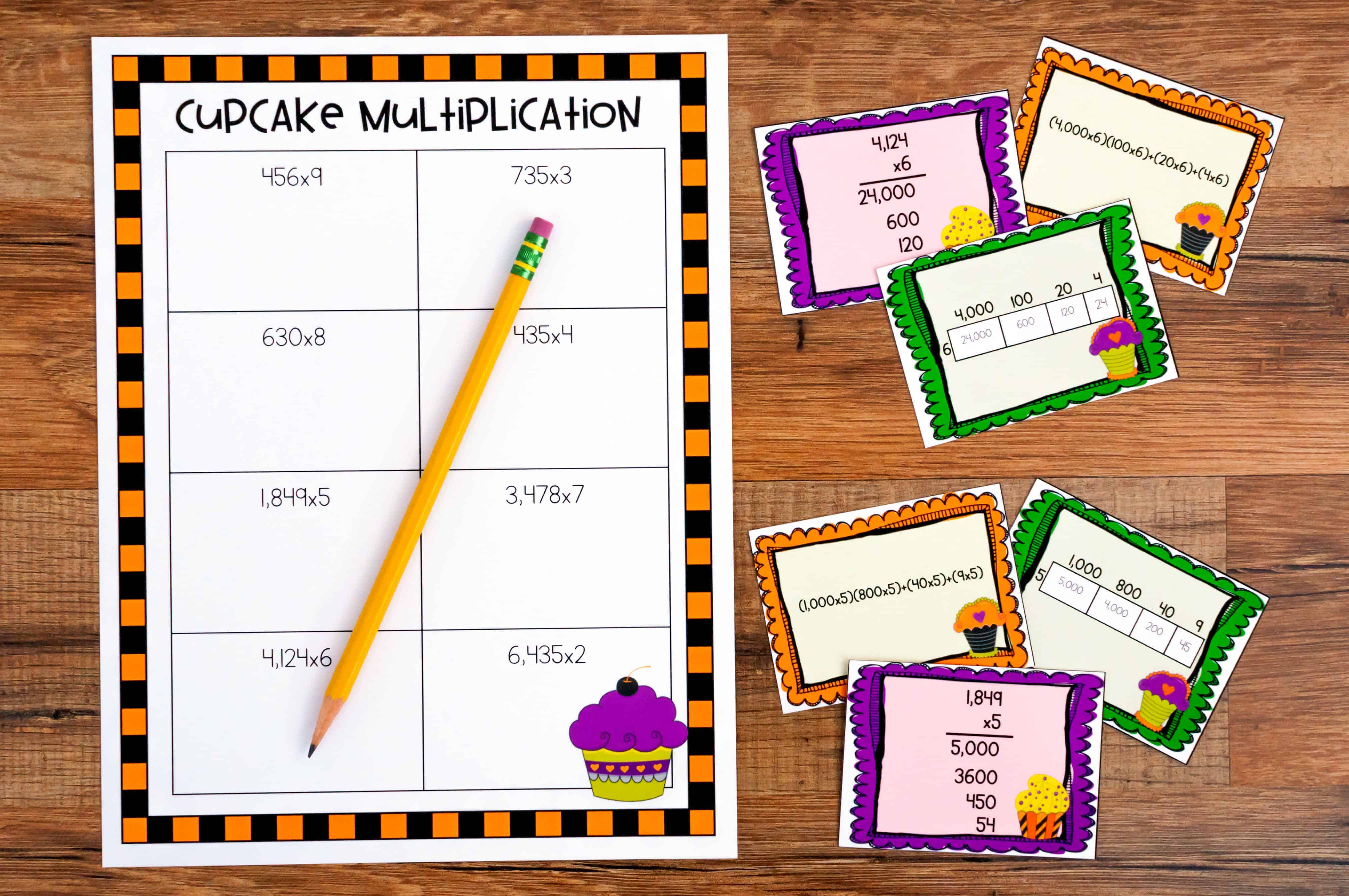
I’ve included an answer sheet for each station, because I want my students to receive immediate feedback and to not spend an entire rotation solving problems incorrectly.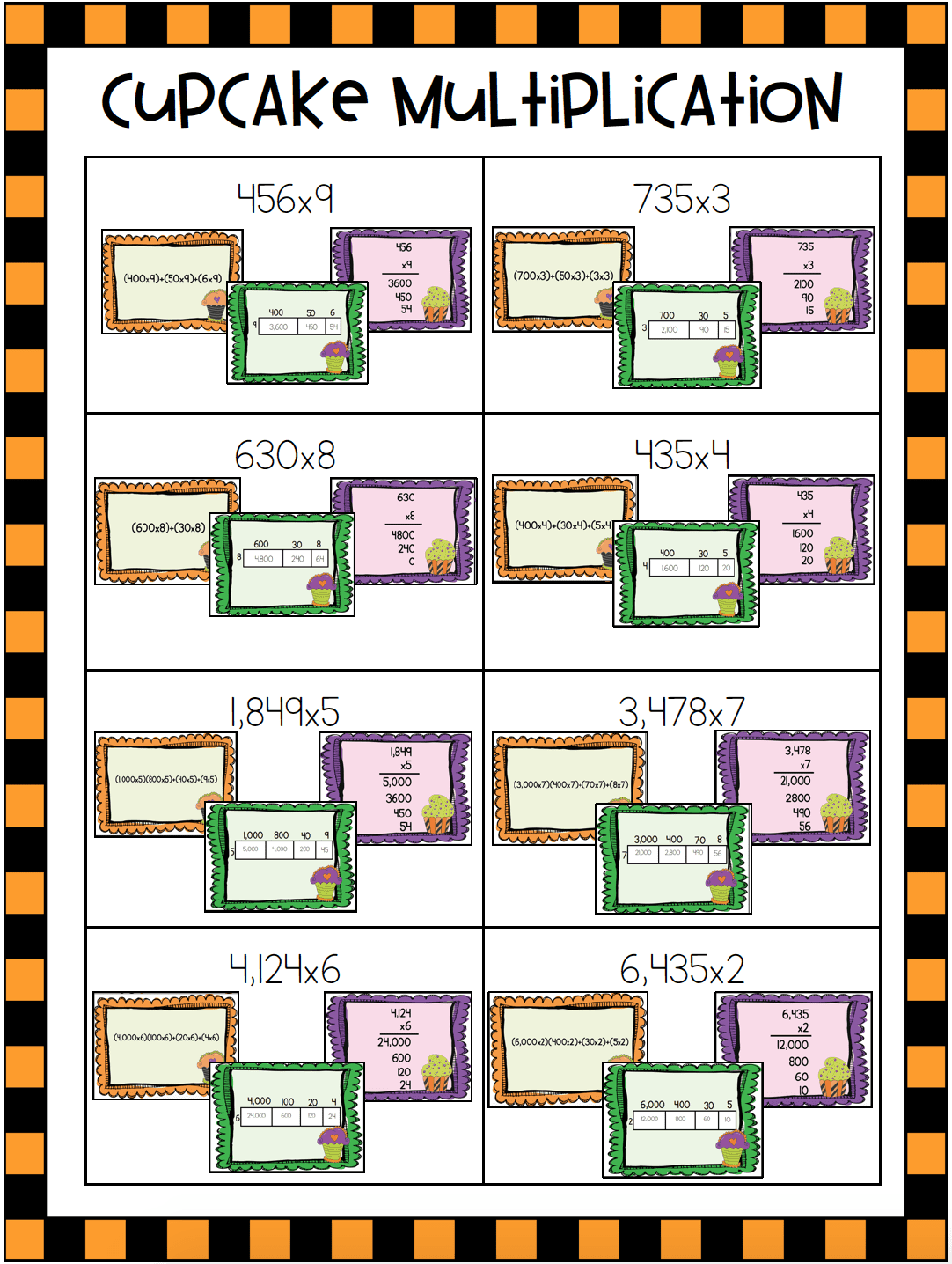
Spider Remainders
In the next activity, students read the book Remainder of One by Elinor J. Pinczes. After reading the book, students select a number card: 15, 16, 21, 22, 25, 26, 28, or 31. If needed, students may collect counters to represent the number card selected. Then, students create arrays to see how they can divide the numbers, using the number card as the dividend, so that there is a remainder of ONE. As an extension, students write a word problem for the division equations.
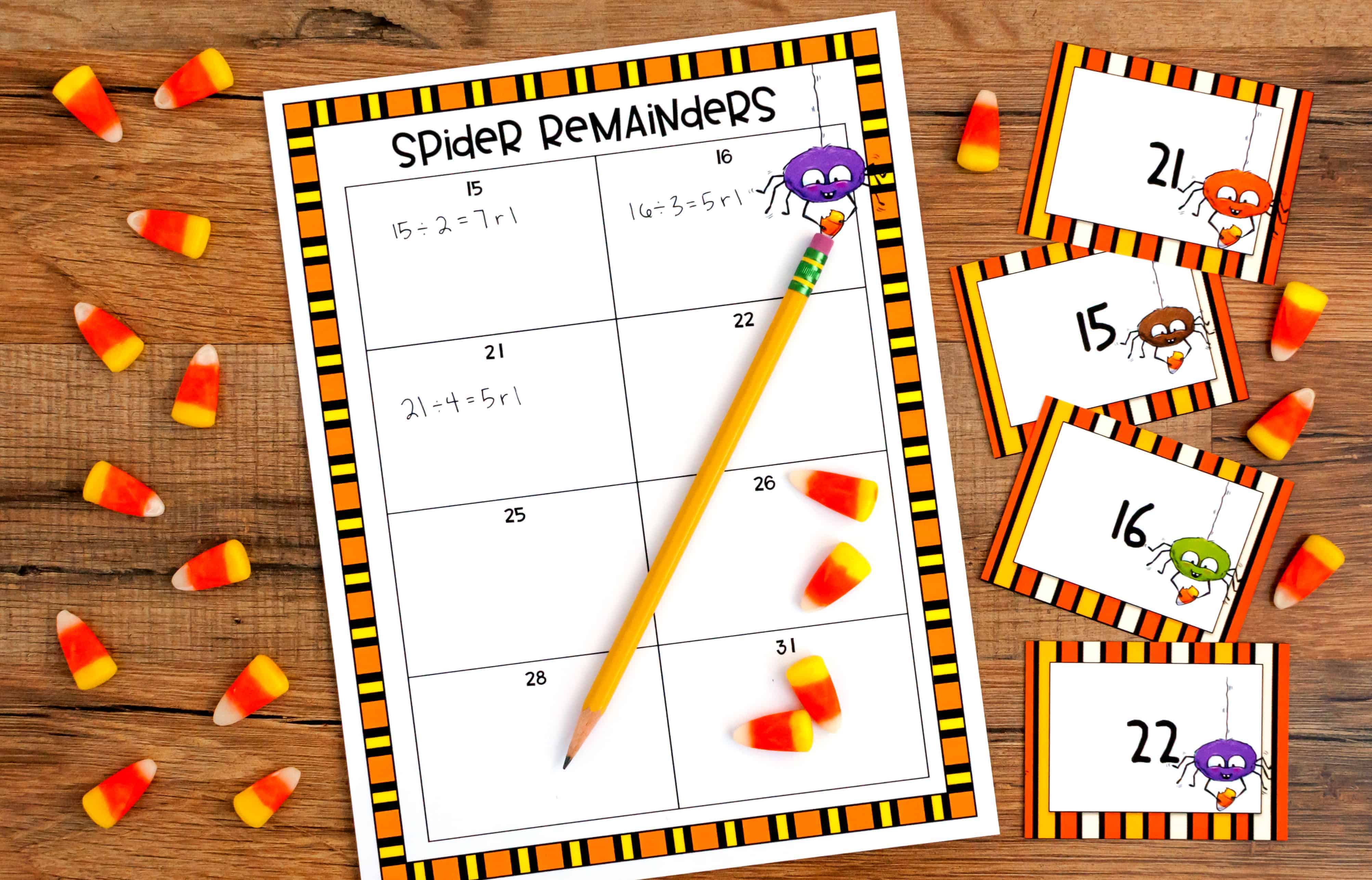
Trick-or-Treat
In this activity students choose a Trick-or-Treat card. They should read the word problem on the card and find an equation card that can be used to solve the word problem. Students must solve each of the word problems and record their answers on the Trick-or- Treat recording sheet. I like that this station requires students to determine the correct equation needed to solve a problem, because students can often tell the correct answer to a problem, but they can’t explain how they found the answer.
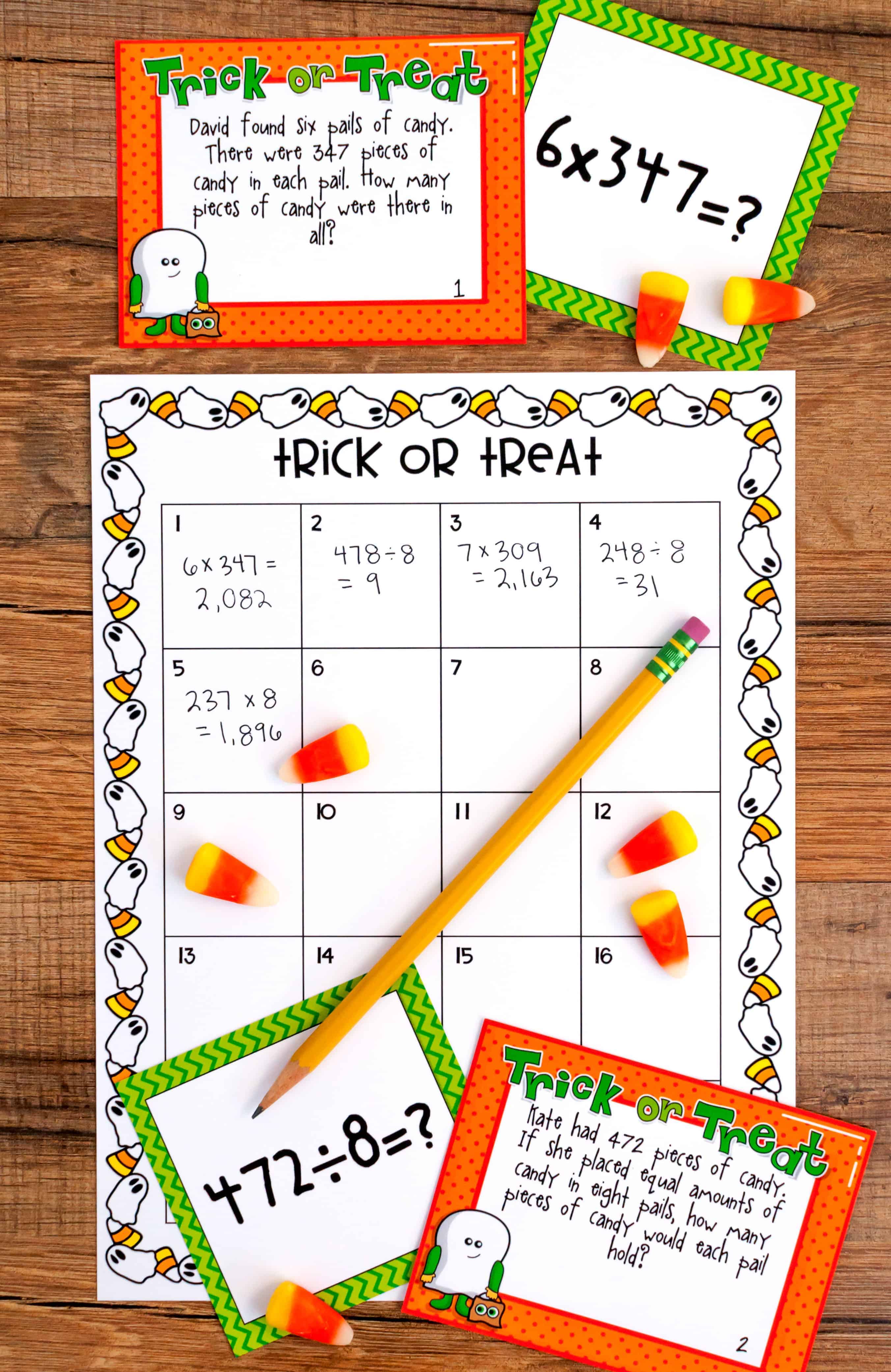
Who’s Hiding
I added this activity to give my students much needed practice with multiplying by multiples of ten. This is something I want my students to be confident with before we move into long division, as this will be a HUGE help for students. Students should draw a Who’s Hiding card and look at the equation on the card. The student determine the number hidden behind the owl and record the complete equation on the Who’s Hiding recording sheet.
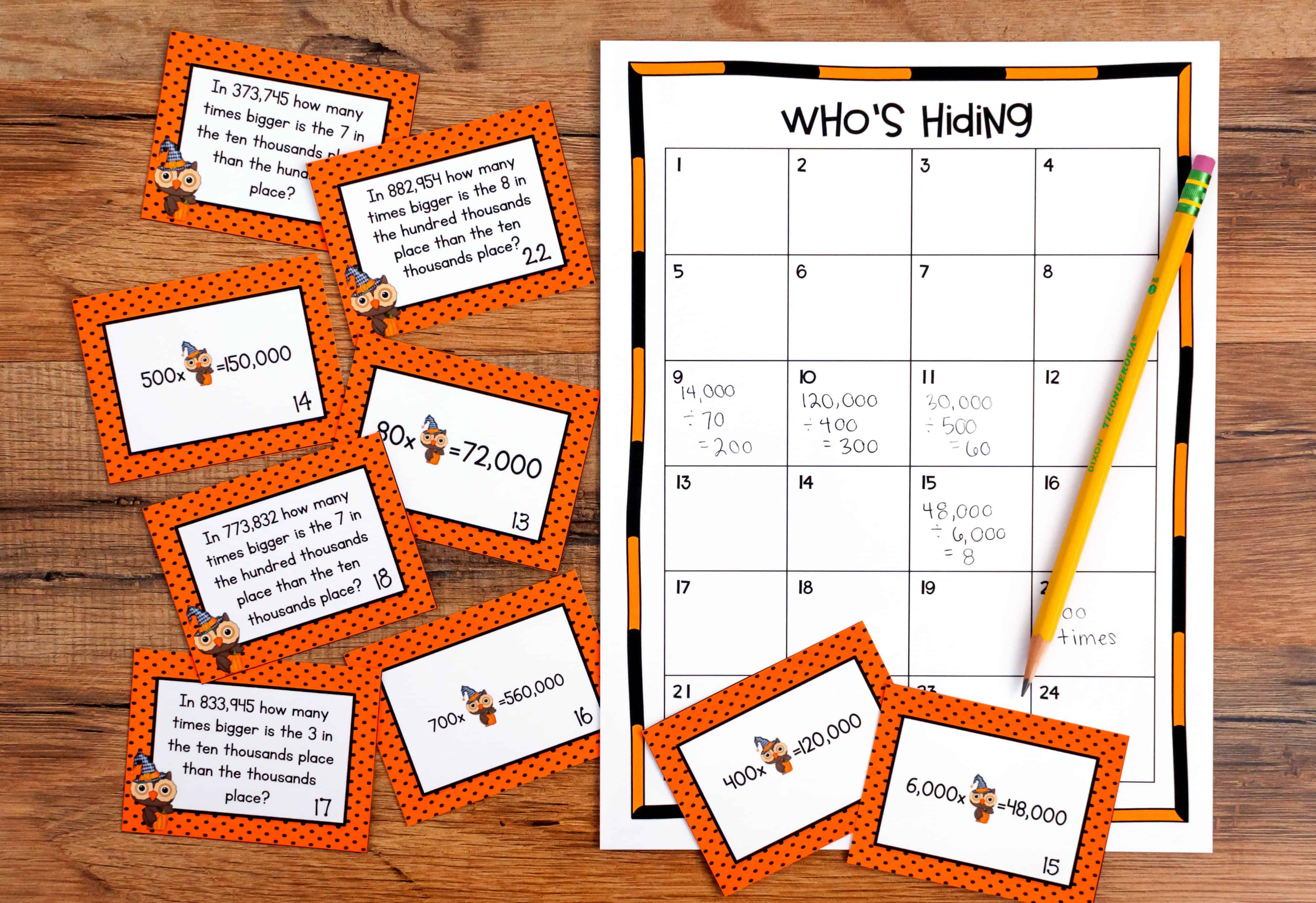
Array-ging Pumpkins
Prime and composite numbers are always a challenge for my fourth graders, so I wanted to be sure to include an activity for extra practice. Students use the included pumpkins, counters, or graph paper to make all the possible rectangular arrays for the numbers 2-25. Students should draw the arrays on grid paper and record the factor pairs for each of the numbers. I like to have students label each number as prime or composite.
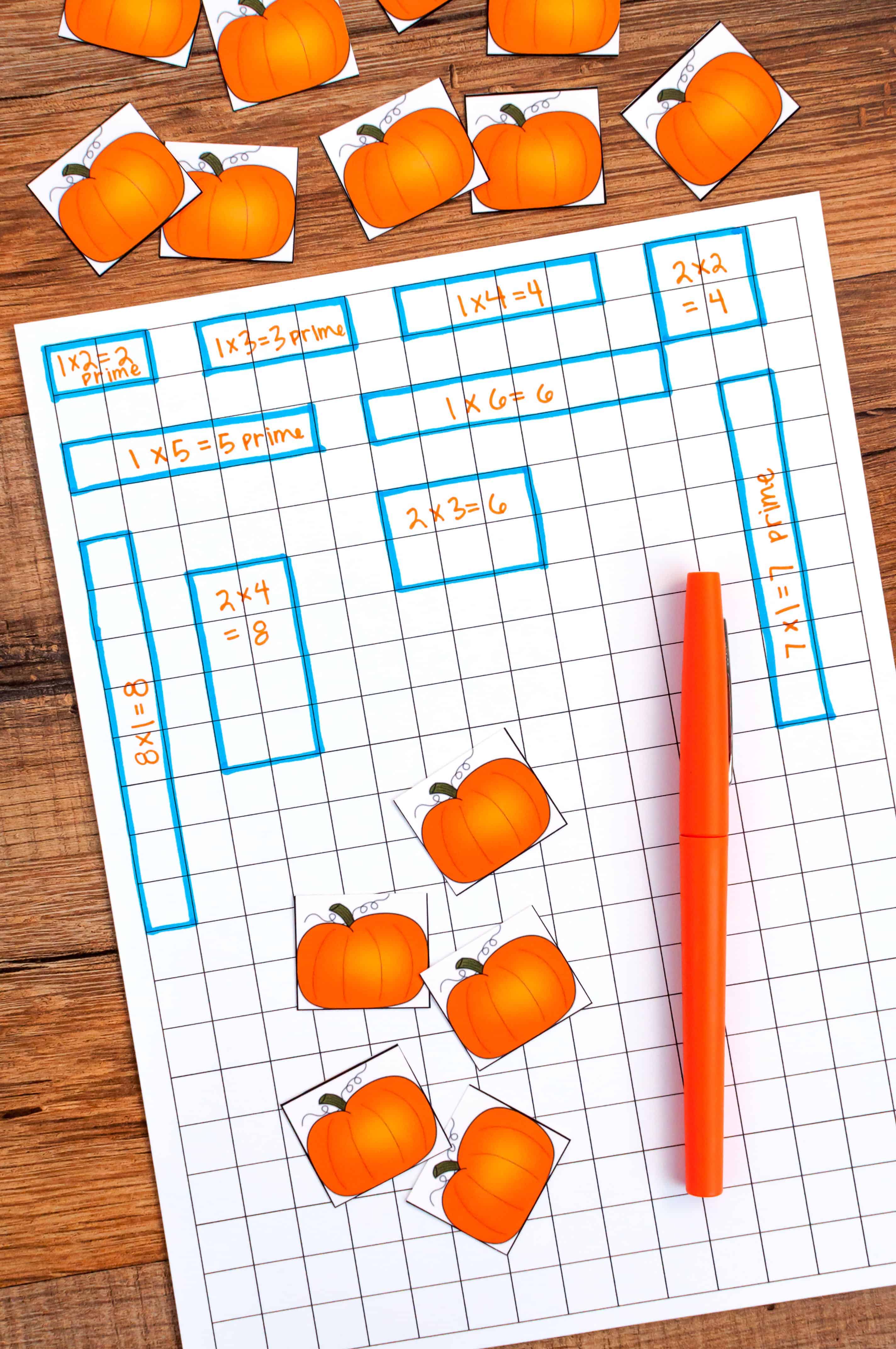
Batty About Rounding
In this rounding-based Halloween math center, students can either Roll 3, 4, or 5 dice to make a 3, 4, or 5-digit number. Students use the number line to identify the multiples of ten the number falls between AND the midpoint between the numbers. Students also add their number to the number line and highlight the multiple of ten your number is closest to.
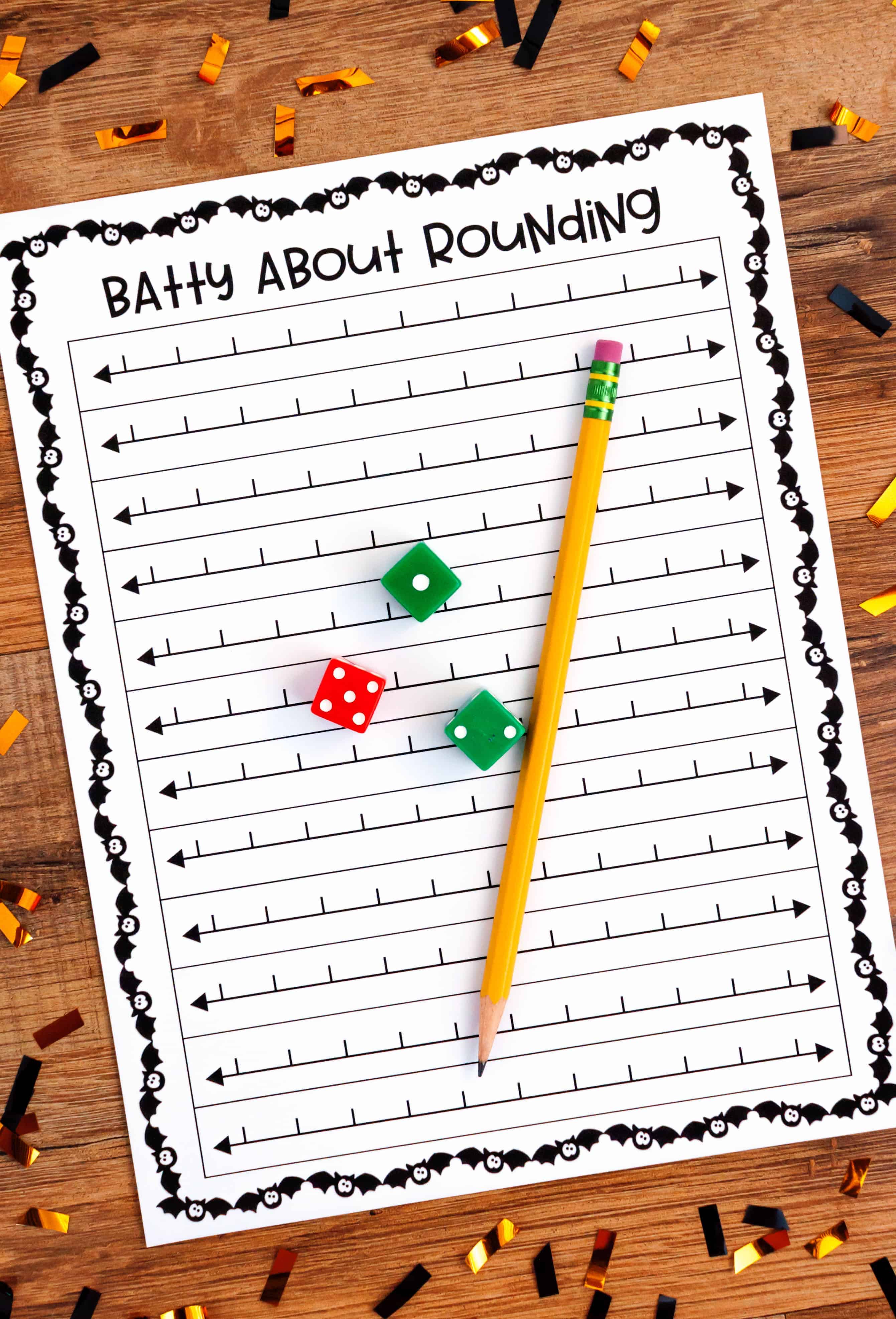
Sweet Multiples
In this activity, students can use candy corn as a counter. Of course, they can still use traditional counters as well. Students should place a candy corn or other Halloween candy on each multiple of two on a hundred grid and continue these steps until you work through numbers 2-10. Students should use the hundred grids to complete the recording sheet.
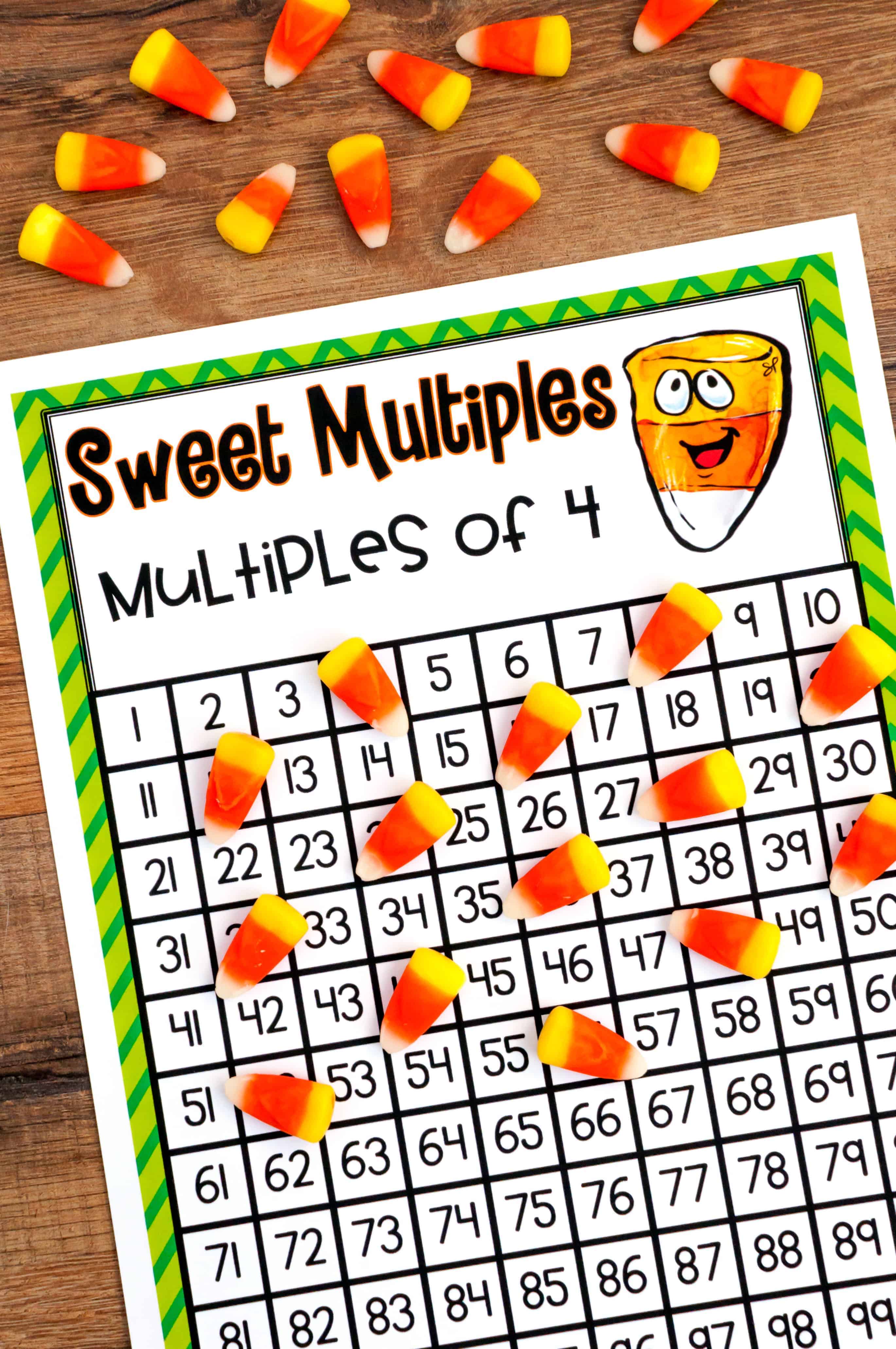
Spooky Recipes
Spooky Recipes is one of my top two favorite Halloween math centers in this pack. It’s fun AND it incorporates multi-step word problems. With this activity, students will need to refer to a copy of the Spooky Recipes handout. However, they will not need to write on the handout. To help save copies and/or ink, you can laminate a couple copies of the handout. Another option is to attach a copy of the handout to the inside of the center file folder. Students should look at the ingredients on the Spooky Recipes handout and carefully read a Spooky Recipe card. Then, students answer the question using the Spooky Recipes handout.
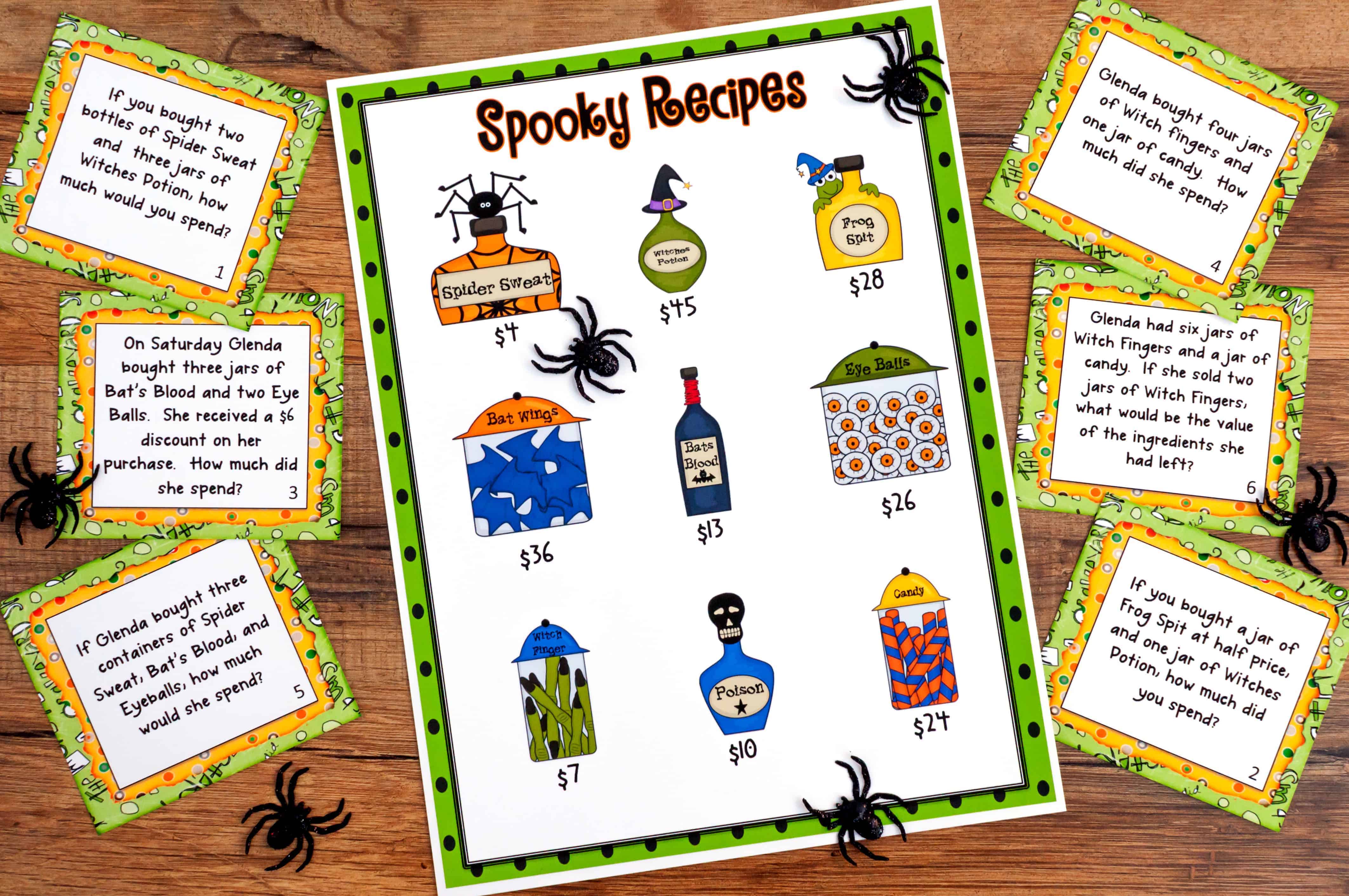
Haunted Math
Haunted Math is my other favorite activity. This is very similar to the popular game of Clue. In this version, someone hid all of the candy at the Halloween party. It’s students’ job to determine who stole the candy, what the candy was hid it in, and the room where the candy is hidden. Students will use the clues on the Haunted Math task cards to solve the mystery in a similar manner to clue. To find a clue students solve the problem on the recording sheet and find the task card that has the answer to the problem on the recording sheet. It will either be a who, what, or where card. Student check off the clue on the table to the right. When students find the who, what, and where that was not checked off, they find the solution to the mystery!
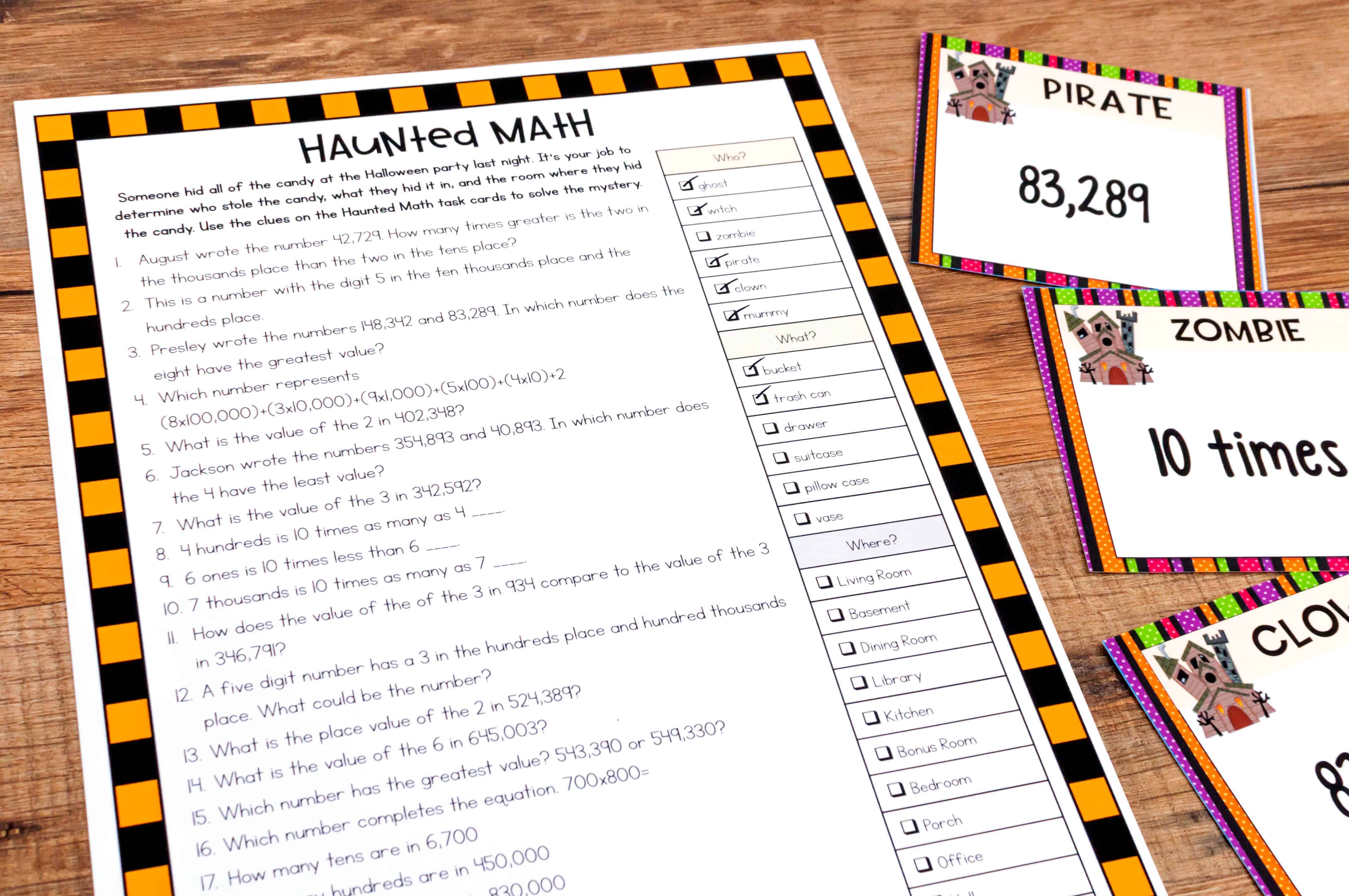
Corn Maze Factors
Corn Maze Factors is another really fun game. To play, each player should place a counter on the start of the game board. A student will roll two dice and add the numbers rolled. If the sum is a factor of the next number on the game board, the player may move their counter to that spot. If the sum is not a factor, the player will leave their counter in the original position. Students should repeat these steps until the first player reaches the end of the game board.
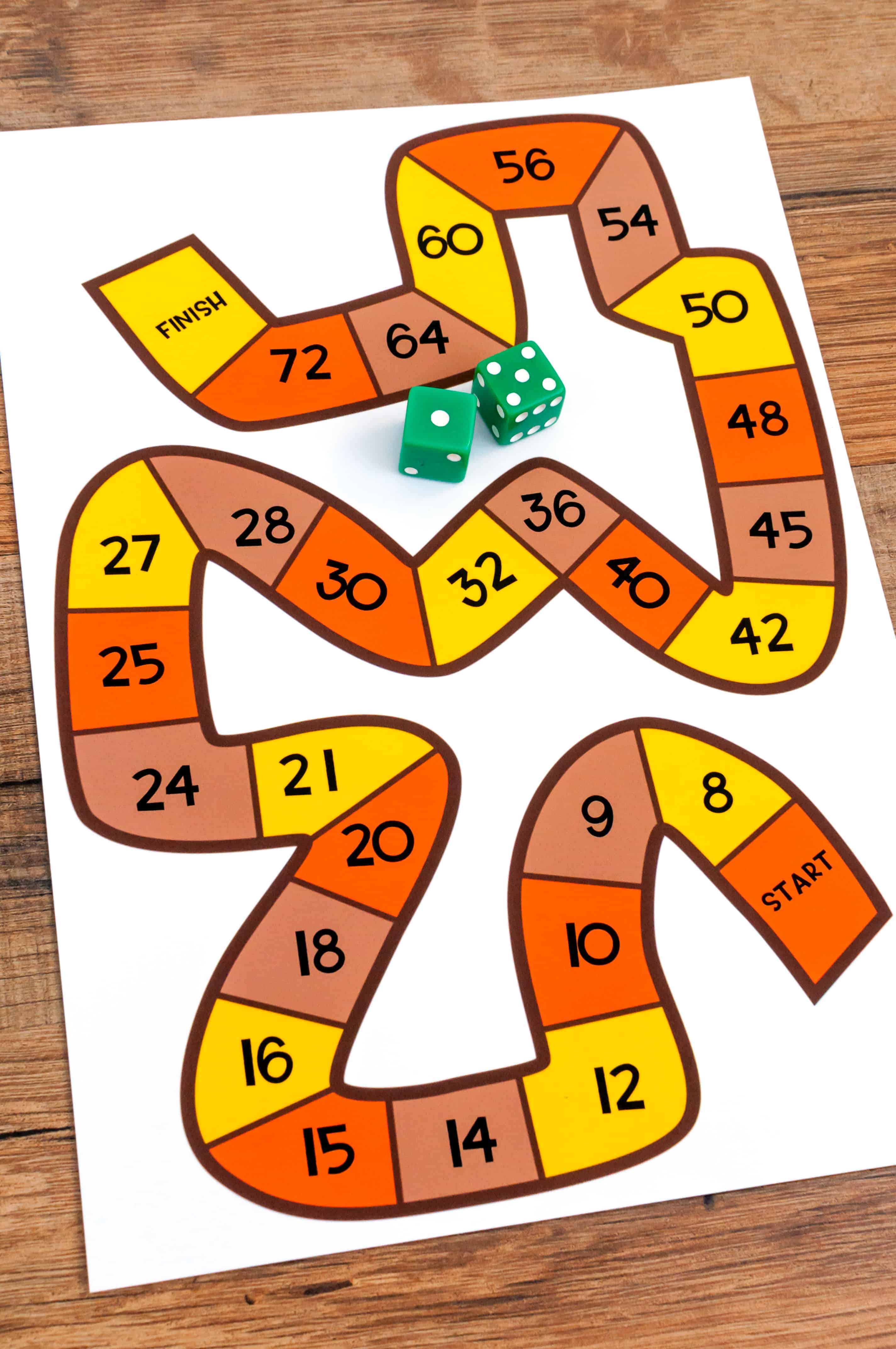
These are the 4th Grade Halloween math centers that I will be using through the end of October in my class. We started using them this week, and my students are so excited. You can check them out on TpT here. If you’re looking for additional ways to incorporate Halloween activities into your instruction, be sure to check out this blog post!
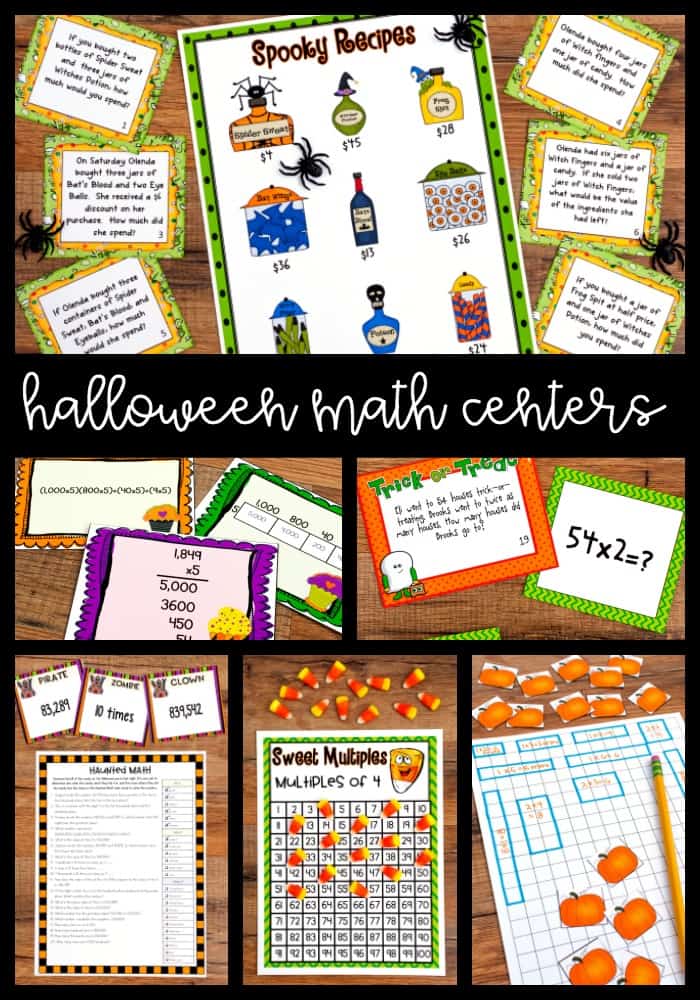



I LOVE these Halloween math centers! I especially love the haunted mansion “clue-like” mystery. Do you have any more of those for other holidays or even better, just anytime of the year? I would buy them for sure. Love your ideas.